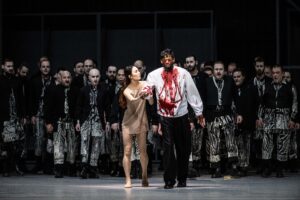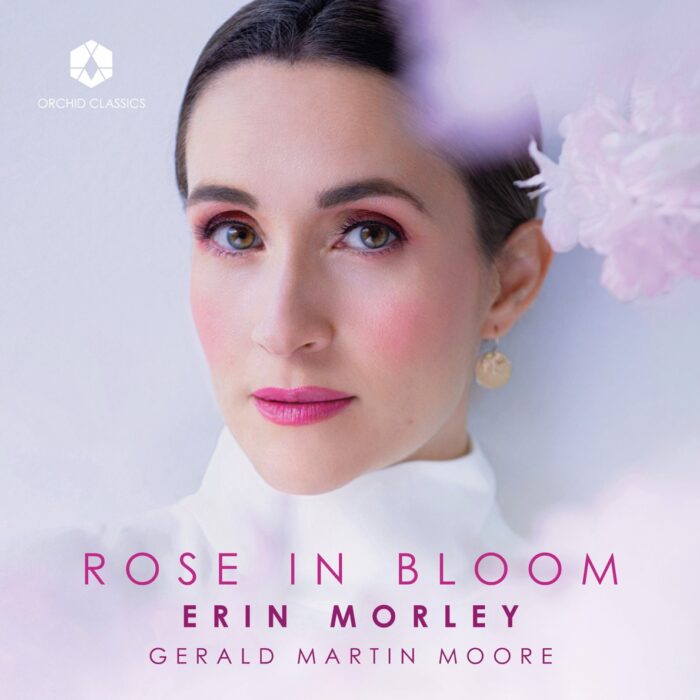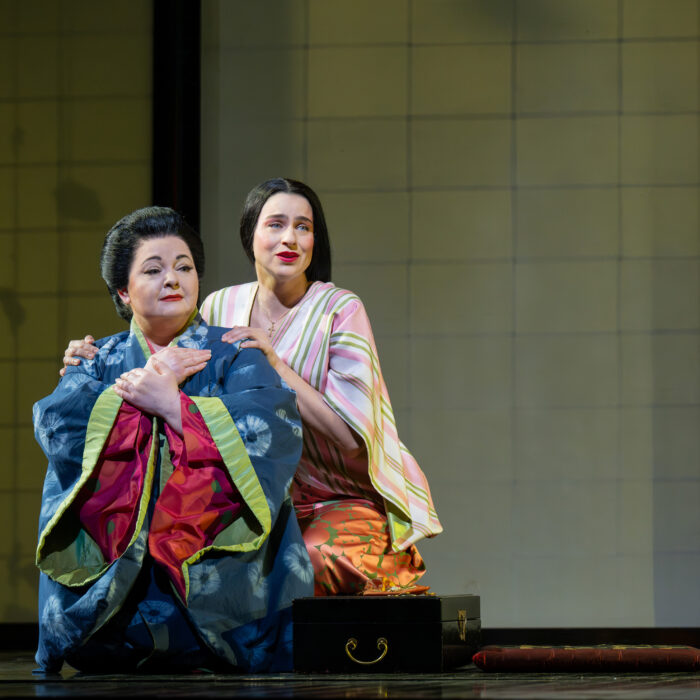
Opera Forward Festival 2024 Review: Oedipus Rex & Antigone
By Alan NeilsonOne of the main events at this year’s Opera Forward Festival in Amsterdam was a Sophocles-inspired double bill featuring Stravinsky’s 1927 work “Oedipus Rex” and the world premiere of Samy Moussa’s new composition “Antigone.” Although neither piece is defined as an opera as such, both sit comfortably at home within the repertoire. “Oedipus Rex” is described as an opera-oratorio and is sung in Latin, while “Antigone” is an oratorio with a significant ballet component and is sung in Ancient Greek. The obvious connections between the two works, centered on Oedipus in the first piece and Antigone, his daughter, in the second, allow the narrative to continue across the two pieces, thereby giving rise to the festival’s title for the double bill, “Jocasta’s Line.”
Two Neatly Connected Works
The oracle foresees that Oedipus will kill his father, the King of Thebes, and marry his mother, Jocasta. Unable to outwit the fates, the prophecy comes to pass, although all the parties are ignorant of Oedipus true identity. Eventually, the truth is discovered, and in a state of horror, Jocasta commits suicide and Oedipus blinds himself before fleeing. So runs Oedipus’ story, the son and husband of Jocasta.
Following his exit, Oedipus and Jocasta’s two sons, Polynices and Eteocles, kill each other in their struggle to take the Thebian crown, which is subsequently inherited by their uncle, Creon. Creon orders that Polynices’ body be left to rot on the battleground, threatening death to anyone who defies the order. Antigone, Jocasta’s daughter and sister to Polynices, refuses to comply, and on Creon’s order, she is to be buried alive. She, however, takes her own life rather than suffer the agonies of a slow death. The fate of Ismene, Jocasta’s sister, remains unknown. Thus ends the known line of Jocasta.
Whilst the stage director was different for each of the operas, continuity and sense of connection were created through Vicki Mortimer’s single set and compatible costume designs, and Cor van den Brink’s lighting.
The staging for both productions relied on large wooden structures that were maneuvered around by the chorus to alter the sense of space; on occasions they were brought close together, creating a claustrophobic atmosphere that intensified the interactions between the characters, while at other times they were used to open up space for the dancers and the chorus.
The costumes were a mixed bag of styles centered on the contemporary, although often highly stylized and were mostly dark in color: black, dark blues and so on, with occasional splashes of white. The only exception was the narrator in “Oedipus Rex,” who was dressed in a red trouser suit to separate her from the drama. On an individual level, the designs created a mixed impression. While both the male chorus for “Oedipus Rex” and female chorus for “Antigone” were imaginatively costumed and added to their strong presence, some of the soloists looked particularly drab, especially in the case of Jocasta, whose dark blue trousers and top drew attention for all the wrong reasons; they were visually ugly and did not complement the rest of the designs.
The stagings for both works were, therefore, very dark, which van den Brink’s lighting magnified, thereby successfully reflecting the narratives of the two pieces. And although the costumes and sets were not particularly appealing or imaginative, they were certainly successful in creating the necessary heavy, foreboding atmosphere for the suicides and violence to play out.
Oedipus Rex
Written to a libretto by Jean Cocteau, “Oedipus Rex” is a piece in two acts for orchestra, soloists, a male chorus and a narrator. It possesses the potential for a variety of presentations, depending, to a large extent, on how the director decides to handle the role of the chorus. For this production, the director, Mart van Berckel, opted for a dramatically strong reading with an active and energetic chorus that engaged physically with the drama. As well as interacting between themselves, the soloists in turn reacted to and communicated directly with the chorus. It made for a visually powerful presentation.
As Oedipus, tenor Sean Panikkar produced a compelling performance in which he captured his character’s proud and courageous nature. He possesses a clean-sounding voice with a colorful palette, which he used successfully to create an emotionally expressive and tragic figure. His confrontation with Tiresias was particularly successful, in which his anger and terror fused to create an emotionally strong yet nuanced reading.
Jocasta is very significant, although she plays only relatively small part in the drama. Mezzo-soprano Dame Sarah Connolly showed off her quality with a clearly defined performance in which her character was instantly recognizable, as she confidently dominated the stage, exuding a sense of power. It was also a beautifully sung performance in which her clearly articulated consideration of Laius’ death captured the attention.
Creon was played by baritone Bastiaan Everink. Although it is a relatively short part, he managed to assert his character with his impressive vocal technique and expressivity.
Bass Rafał Siwek, dressed in a black robe with dark glasses, cut an imposing figure as the blind Tiresias. His distinctive tone, forceful and confident projection, and sensitively wrought phrasing gave his voice a suitably other-worldly quality.
The role of the shepherd enabled Linard Vrielink to show off the versatile quality of his voice to good effect. He possesses a pleasing, resonant tenor that was able to rise confidently above the chorus and orchestra.
Bass-baritone Frederik Bergman was equally impressive in the role of The Messenger, for which he produced a clearly defined reading that allowed him to display his beautifully crafted phrasing.
Nazmiye Oral produced a clear, articulate and confident performance in the spoken role of the Narrator.
The male chorus of the National Opera played its part splendidly. Its singing was strong, expressive and energetic, and it engaged fully with the drama.
Antigone
The libretto for “Antigone,” written by Moussa in collaboration with Niall Potter, is based on texts by Aeschylus, Empedocles, Euripides and Philostratus the Elder, as well as Sophocles. Instead of solo roles for singers, dancers are used to perform the parts of the main protagonists, and a female chorus is used to counterbalance the male chorus used in “Oedipus Rex.”
Nanine Linning’s stage direction was sympathetically crafted to complement van Berckel’s staging of “Oedipus Rex,” with the chorus again given an active role, and in which no punches were pulled in depicting the bloody horror of the final scene. Linning was also responsible for the choreography, in which dancers played by Quin Liu, Dingkai Bai, Fabio Rinieri, Sandra Quintyn and Sander Baaji were encouraged to produce animated, and at times wild, performances in their roles as the main protagonists.
The female chorus of the National Opera, not to be outdone by its male counterpart in “Oedipus Rex,” was fully committed, producing a lively and spirited performance.
Moussa is clearly an accomplished composer who knows exactly what he is doing; he builds the music carefully to create emotionally strong scenes, crafts clear, accessible melodies, ensures that there is an ebb and flow to the music, employs a pleasing orchestral palette so that there is always plenty of contrast and he allows the energy to well up and surge forth. He is capable of creating mournful as well as intense, angry music and is happy to incorporate sound effects. It is all very dramatic. However, it is also music that often appears to be a little too polished; it is all too easy and does little to challenge the listener. Often, one had the feeling that the music would be more suited to a film score.
The musical director, Erik Nielsen, elicited a strong emotional reading of both works from the Netherlands Philharmonic Orchestra, capturing the raging passions that threaded their way through the narrative.
This was an imaginative pairing that worked well together, although the unrelenting gloom that dominated the two dramas, magnified by the dark staging, meant that they weighed heavily on the emotions. On the musical side, it was largely successful, despite the reservations about Moussa’s score, which nevertheless did sit comfortably alongside “Oedipus Rex.”



